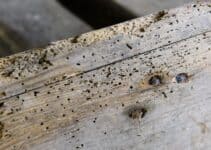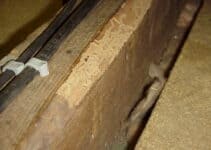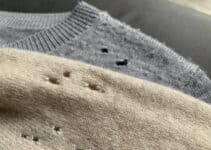A woodworm infestation can prove a worrying problem for any proud property owner. Anywhere you have exposed timber can theoretically end up a home for these wood-loving pests. Lofts and attics are no exception.
But can woodworm live in or damage loft insulation itself? Generally speaking, loft insulation is made out of material that woodworm just won’t eat and therefore won’t be interested in. The bugs will not directly target or tunnel through loft insulation, nor are flying female beetles likely to lay their eggs on such surfaces for the larvae to feed on.
Popular insulation styles such as mineral wool, fibre-glass, spray foam, blown fibre and loose-filled insulation are not likely to provide food for hungry beetle larvae.
That being said, you may notice some of the tell-tale signs of woodworm on or near loft insulation. Dust or wood shaving-like particles known as frass, left by beetle larvae as they tunnel through timber, may appear near exit holes.
What’s more, whilst woodworm is unlikely to target loft insulation itself, you may find that in order to properly treat an attic space with an active and problematic infestation, insulation needs to be removed in order for you to gain access to timber surfaces.
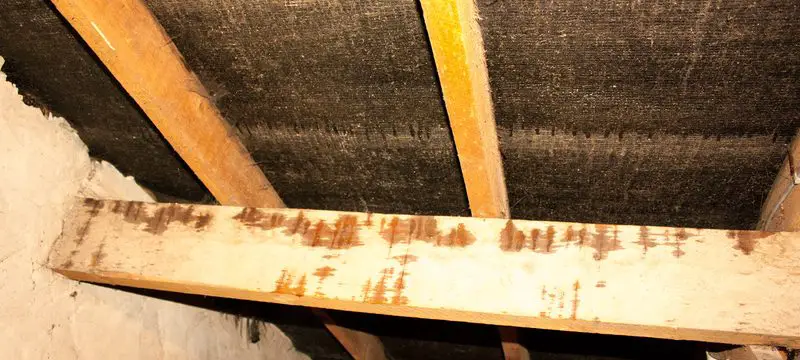
How Do You Treat Woodworm in a Loft?
There are plenty of over-the-counter products marketed for the treatment of woodworm, many of which can be applied safely by DIYers with appropriate protective equipment.
That being said, you may find it prudent to consult a surveyor and a professional pest removal service, particularly if you suspect an active infestation is extensive.
Most modern woodworm treatments involve the application of liquid insecticides to the surfaces of affected timber. The goal is to kill any existing larvae as well as any flying beetles that arrive to lay their eggs.
Some treatments also come with sealant properties as well. Otherwise you are advised to repaint and reseal wood once it has been treated.
A difficulty sometimes cited is that treatments available over the counter may not penetrate timber sufficiently to kill larvae that have burrowed deeply.
On the other hand, some species of woodworm larvae are said to remain close to the surface of the wood anyway and are therefore still likely to be successfully reached by standard treatments.
Surface wood treatments can come with various chemicals, such as boron, copper sulphate, or permethrin. For this reason, it is often advised to use gloves, face masks, goggles, and protective clothing when diluting or applying the solution.
How to Treat Woodworm in Attic
Woodworm treatments are usually applied via brush, spray bottle or by dipping.
In an attic space, it is important to cover all timber that could be accessed by beetles. To do this thoroughly, most pest removal companies will advise that the whole loft needs to be cleared, including of insulation, so that exposed beams, floorboards, and wooden corners can be accessed and treated.
Any insulation or items that are not removed may, depending on the material and depending on the substance used for woodworm treatment, be compromised if exposed to certain chemicals.
To be on the safe side, it is best to protect any non-wooden material with plastic sheeting prior to applying the treatment.
Different chemical solutions will require different amounts of time before an area can be re-entered. It is important to keep the space sealed off from any living quarters below to minimise the risk of human contact with harmful chemicals.
Pest removal companies often market themselves as being able to do a safer and more thorough job than DIYers with a store-bought treatment solution.
Some companies market themselves as being able to apply treatment solutions that penetrate further into wood. Others may seal off and fumigate an entire attic space for a more thorough extermination.
A professional company will often opt for treating the an entire attic space, rather than just isolated areas of timber, meaning you may need to remove any items and insulation prior to their arrival.
One major advantage of pest treatment companies is that some offer multiple year guarantees following their service. If you shop around, you’re likely to find a company that will agree to return to the property to carry out repeated treatments free of charge if the first does not prove successful.
A professional pest removal company should be able to identify the extent of an infestation as well as the potential damage it could cause. If you would like to get a sense of this independently of a pest control firm, an independent surveyor can be used.
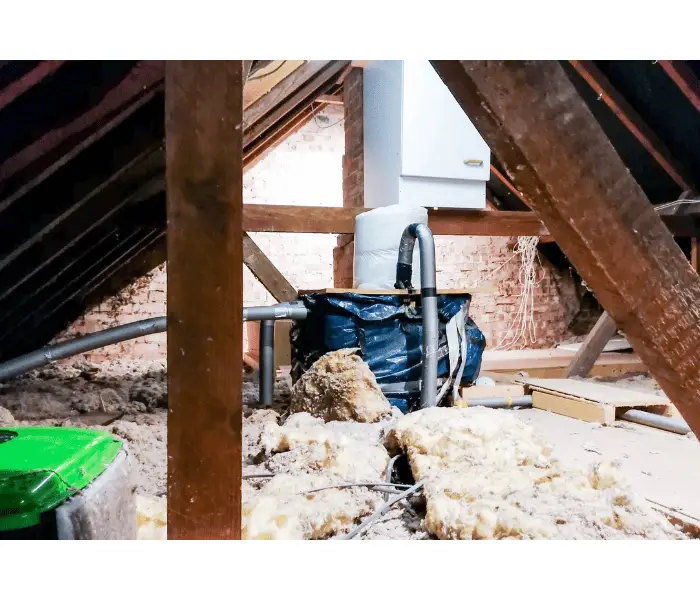
What Causes Woodworm in Attic
Woodworm is caused by larvae of wood-boring beetles. These beetles lay eggs in crevices of wooden structures in attics, which hatch into larvae that tunnel into wood, feeding and causing damage. Factors attracting beetles include high humidity, poorly ventilated or untreated wood, and existing beetle infestations.
They’re more common in older properties due to untreated timbers. The cycle continues as larvae mature into beetles, exit the wood, and lay more eggs. Regular inspection and treatment are key to preventing significant damage.
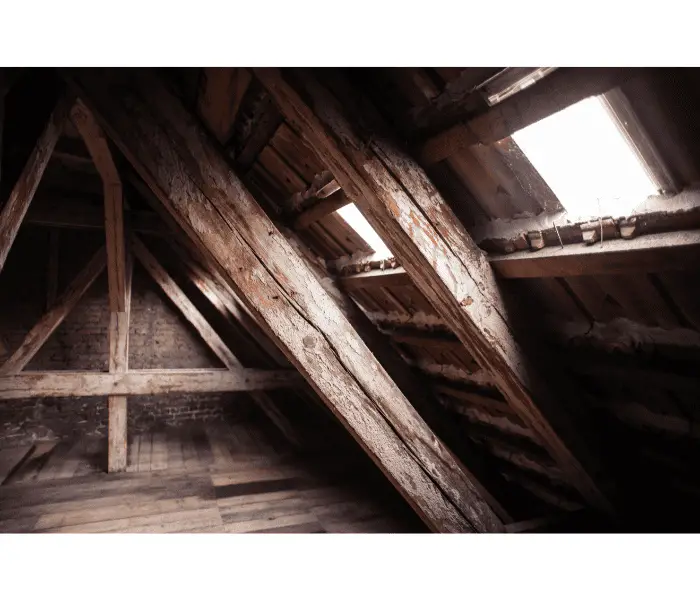
How Much Does it Cost to Treat Woodworm in Loft?
As you might expect, the extent of your woodworm infestation and the size of the area affected are both going to affect the price of treatment. Whether you opt for treating the issue yourself with store-bought products or paying a professional team to do so will also make a huge difference.
That being said, some rough estimates can be suggested.
A professional survey of an attic space from a qualified surveyor or pest control professional could cost anywhere between £50 and £200.
If you then opt for treatment yourself, most DIY liquid solutions cost between £10 and £50 for every 5 litres. You may find you need to purchase personal protective equipment if you don’t already own it, which might add an additional £10 to £50.
Professional firms don’t usually offer transparent pricing on their websites, preferring you to contact them directly for a tailored quote.
Expect to pay multiple hundreds of pounds for a professional woodworm treatment for your loft, anywhere from £300 to £900 for larger spaces. Fogging or fumigation may cost marginally more depending on the chemicals used.
Remember, professionals may also request that you clear a loft space before any treatment is begun. It may be that certain pieces of timber need repainting, sealing, or even replacing after treatment, DIY or otherwise, so you may wish to factor these into your financial and labour calculations.
Final thoughts
It’s important to note that some signs of woodworm, such as exit holes, do not in and of themselves indicate an active infestation. Nor will all infestations require treatment.
It might also be necessary, in the case of large infestations, to assess whether they have affected the structural integrity of any timber.
Joists, rafters and floorboards are especially worth checking, given the risk of injury these can present if significantly weakened.
For that reason, having an independent surveyor take a look at the affected area before commencing any laboursome and potentially costly treatment can prove vital.
